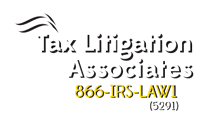Stop Wage Garnishment from the IRS
Call Our IRS Wage Garnishment Phone Number Now for a FREE Consultation 866-477-5291
Need tax help? At Tax Litigation Associates, 96% of our wage garnishment customers get tax relief after their garnishments are lifted in 3 to 4 business days. We don’t send mail to resolve your problem. Rather, we pick up the phone and take care of your specific situation immediately with the IRS.
Our team of tax specialists has multiple years of experience. After all, our company specializes in understanding exactly how the IRS works and what documentation is needed. One must realize that the IRS utilizes wage garnishment or levies as a last resort. That is fortunate, considering it is one of the most lethal weapons available to the IRS. Fortunately, there are several ways to have the levy or garnishment released.
The first thing that will be done is a verification of the taxpayer’s compliance with the IRS. This means that all outstanding tax returns for every year has been filed. Those tax returns include 1040s, 1099s, quarterly estimated tax payments, 941s and 940s, depending on the taxpayer’s situation.
One of the main reasons why a tax professional at Tax Litigation Associates should contact the IRS on the taxpayer’s behalf is because the IRS will not give you any information right away. Rather, you will be immediately interrogated. The IRS will try to find out every bank account that you have, what other incomes you possess and the assets you own to levy. A tax professional does not have to release that personal information to the IRS.
What the IRS Is Looking For
Everything is determined by the IRS computers and the automated collections division. The only way to be brought into compliance is by filing all years that are missing. Depending on what the computer states, you may have to file 6 years’ worth of IRS tax returns. They may even go back to 15 years’ worth of taxes. Therefore, the IRS must be contacted immediately to figure out exactly what needs to be done.
If there are compliance issues found, the IRS will inform the tax professional or the taxpayer what specifically must be filed. It is important to prepare these taxes, but not to mail them in. They need to be faxed to the IRS. That way, they are immediately acknowledged in the IRS computers and the processing of these returns can start within hours, rather than weeks or months. Keep in mind that the IRS will not release a wage garnishment until the tax returns are submitted for processing. Once it is determined that a taxpayer complies, the IRS will then look for a resolution to outstanding taxes owed. This may be in the form of a payment plan, a partial payment plan, having the taxpayer declared non-collectible, or an offer in compromise.
In most cases, the IRS will request your financial information through certain IRS forms to determine how much, if anything, you can afford to pay towards your total tax liability. If your file is being handled by the automated collections division, a 433F form (a simplified Collection Information Statement) has to be prepared and submitted along with supporting documentations. If the file is with a field agent, a 433A form (a detailed Collection Information Statement) has to be prepared and filed with the field agent, along with any supporting documentation. The IRS knows that in 90% of the cases, the wage garnishment or IRS levy is a hardship on the taxpayer. That’s why the IRS should release the wage garnishment within hours. Unfortunately, taxpayers often try to perform this procedure by themselves. Without a tax professional involved, the IRS simply drags their feet and the process takes far too long. If you are wondering how long does an IRS wage levy last, the tax professional you choose to represent you should force the IRS to comply with the rules and regulations to have these matters expedited within hours.
Taxpayers Have a Choice
There is a second method of having a wage garnishment or levy released. This procedure consists of proving this wage garnishment is a true and immediate hardship to the taxpayer. A hardship to the taxpayer occurs when housing, transportation or food expenses are at an immediate risk. For instance, if your electricity is about to be disconnected and you can provide a statement from your service provider showing that your electricity is being shut off due to non-payment. The same method applies if you can provide an eviction notice or foreclosure notice due to non-payment. Asking the IRS to release the wage garnishment is an extremely difficult task. In most situations, the taxpayer is unable to resolve this issue without a tax professional.

